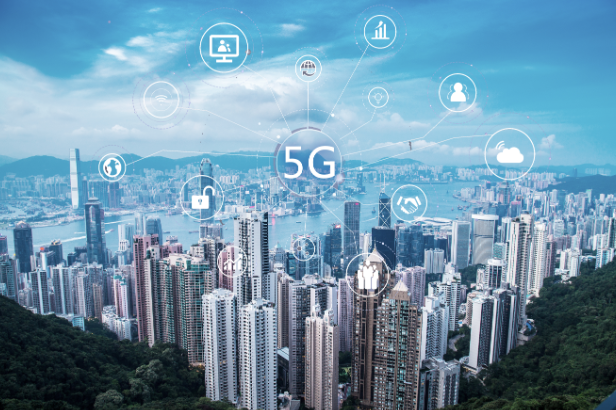How to use 5G to optimize car manufacturing

How to use 5G to optimize car manufacturing

Auto production is increasing as the industry recovers from the epidemic and global chip shortages. Electric and hybrid vehicle manufacturing has grown even faster in recent months. It is expected that the total annual output of the automobile industry will reach 1 million vehicles by the end of 2028, and automobile companies need their manufacturing plants to move forward at full speed in this highly competitive environment.
The truth is, automakers need their factories to operate at their best. Ultra-reliable systems are a must and all machines are fully optimized. There is no room for downtime on the production line or manufacturing delays or defects caused by problems in the repetitive process of assembling parts.
Today, automakers require fully functional factories, supported by IT infrastructure, systems and solutions that not only operate seamlessly but also autonomously identify potential failures and repair and replace parts before they fail. This is where dedicated 5G network solutions come in.
5G offers more capabilities
5G private networks can create the stable, reliable network with the wireless flexibility that automotive or other manufacturers need in their factories. 5G private networks provide fully customizable, secure, low-latency and time-sensitive capabilities to the devices and services or applications within them.
When combined with artificial intelligence (AI) and automation, private networks can transform manufacturing processes, improving productivity, efficiency, environmental impact and safety while reducing costs.
In terms of secure operation data analysis, 5G private networks will completely change the rules of the game. The analytics process used to work like this: Information was fed back from end devices to a central environment within the enterprise or to the organization's cloud. From there, it will be processed and then insights and actions will be sent back to the same device.
Today, 5G-powered private networks mean data analytics can take place at the edge of the site for optimal predictive machine maintenance. Devices in dispersed locations across the infrastructure can process information on-site and learn if they need to operate differently or if there are any deficiencies. They can then act autonomously on that information to make the changes needed to run more efficiently, or signal maintenance teams to remotely fix any defects before they cause downtime.
Accelerate development with 5G
Ford Motor Company is a great example of an automaker using 5G private networks to great effect. Ford needed to create a reliable network to support all critical production and maintenance processes at its manufacturing facility in Dunton, Essex.
It has partnered with Vodafone to create a 5G private network using the mid-band 1GHz-6GHz spectrum. With Mobile Private Network (MPN), Ford gets the best of both worlds; the reliability and responsiveness of a wired connection with the wireless flexibility and cost-effectiveness of a wireless connection.
In addition, the wireless solution means the company is able to bring new facilities online more quickly, while manufacturers of production line machines are able to remotely configure them so they can be up and running at Ford's facilities as soon as they arrive at the factory.
Private networks use 5G connectivity for a variety of reasons, including real-time analysis of machine performance, identifying defects and managing responses to any changing conditions in the production process. Deploy artificial intelligence (AI)-based predictive maintenance to find defects and reduce downtime, while using augmented reality (AR) and mixed reality (MR) technology to support remote maintenance of factory equipment.
Ford’s network plays a critical role in avoiding downtime, as can be seen in the laser maintenance deployment process used in Ford’s electric vehicle manufacturing.
For Ford factory workers, quality inspections of laser equipment are costly, cumbersome and repetitive. As a result, the business wanted to move to automated processes, using data to continuously monitor and, where applicable, maintain its laser machines.
Based on the 5G private network, Ford created a mixed reality maintenance solution based on PTC's Vuforia platform. Typically, heat buildup in a laser system is a sign that the laser lens needs cleaning or replacement. By collecting data from the laser welding process, the solution can identify any heat build-up and determine if the laser requires maintenance or repair.
From that point on, it can solve problems autonomously. If a lens has reached the end of its useful life and needs to be physically replaced, a technician will be alerted and remotely guided through the laser lens replacement process while wearing HoloLens.
While the trial has now ended, 5G private networks have proven invaluable in eliminating unnecessary downtime on production lines and the resulting manufacturing delays.
5G private networks help automakers produce at the speed they need
We are at an exciting time in automotive production. Manufacturing data is growing to pre-pandemic levels and shows no signs of slowing before the end of the decade. However, in order to continue to compete and meet these impressive numbers, automakers need to ensure that their factories can help them produce as fast as possible.
This means optimizing production lines to minimize downtime. 5G private networks have proven to be the solution that leading car manufacturers need for the monitoring and maintenance required for optimal manufacturing processes, and we urge more companies to follow suit.
Setting up a 5G private network can seem like a daunting task, but there are many experts who can offer advice and guide manufacturers through deployment; ensuring they find the perfect solution for their organization.